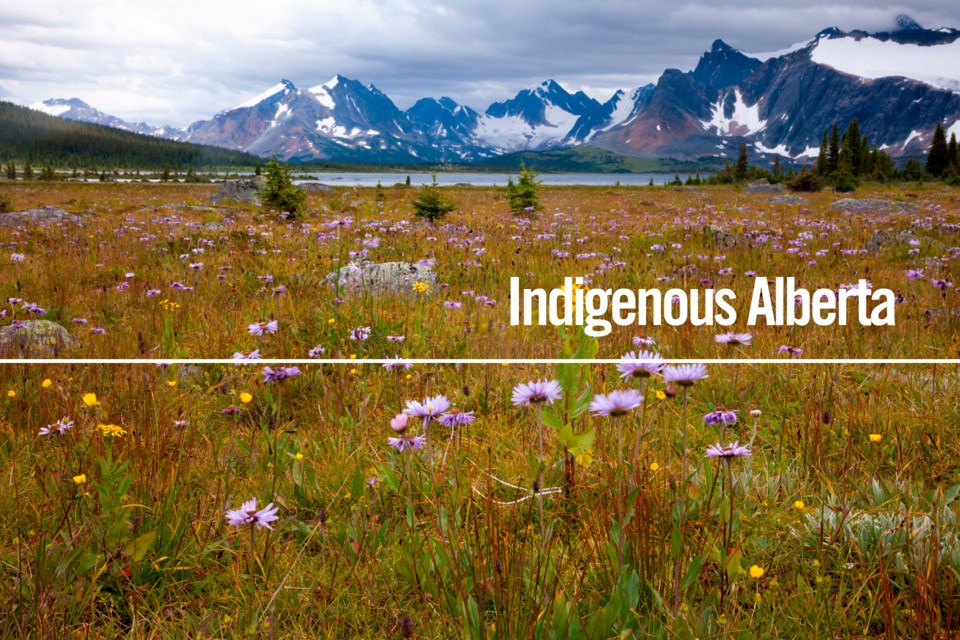(WINSPEAKER.COM): The provincial government and Canada have jointly put up a pot of $300 million to expand broadband access in Alberta.
“We know that rural, remote and Indigenous communities across the province need significant relief in that regard,” said Service Alberta Minister Nate Glubish.
He said funding will be distributed in such a manner as to ensure the best value for the investments, meaning the most households that can be served by a project, but “also balancing the need for regional fairness ... and also ensuring there are Indigenous communities represented by these projects.”
The specifics of the dollar figure that will go to Indigenous projects or to Indigenous Internet Service Providers in Alberta were not offered by either Glubish or Randy Boissonnault, federal minister of Tourism and associate minister of Finance, who joined Glubish for the announcement.
Edmonton-Centre MP Boissonnault was representing Gudie Hutchings, minister of Rural Economic Development.
The Canada-Alberta Broadband Partnership agreement sets the framework for collaboration to select and move forward projects from the $2.75 billion Universal Broadband Fund (UBF), a federal program that supports high-speed Internet projects in rural and remote areas across the country.
The UBF sets aside up to $50 million to support mobile Internet projects that primarily benefit Indigenous peoples, which includes projects along highways and roads where mobile connectivity is lacking.
In August, the federal government signed a memorandum of understanding with Alberta to match dollar-for-dollar the $150 million committed by the province to expand broadband in rural, remote and Indigenous communities.
That funding will provide “a tangible benefit,” said Enoch Cree Nation Chief Billy Morin, whose community hosted the official announcement Dec. 16.
Approximately 80 per cent of Indigenous households in Alberta compared to 54.4 per cent Canada-wide do not have access to Canadian Radio-television and Telecommunications Commission (CRTC) target speeds for Internet. In Alberta, 67 per cent of rural households do not have access to CRTC target speeds for Internet compared to 65.2 per cent Canada-wide.
In 2016, the CRTC declared broadband a basic telecommunications service and set targets to connect every Canadian home and business to minimum network speeds of 50 megabits per second (Mbps) for downloads and 10 Mbps for uploads by 2030.
Morin said it was “good to stand up … and advocate and lobby” with the Rural Municipalities of Alberta to get the funding for expanded and improved connectivity.
Even before measures to combat the coronavirus pandemic were put in place in early 2020, Indigenous communities were suffering with education, business and opportunity losses due to lack of connectivity.
A July 2021 report by RBC, Building bandwidth: Indigenous youth for a digital future, clearly stated the need for highspeed Internet in rural and Indigenous communities.
“Addressing the gap starts with basics. The reality is, high speed Internet still hasn’t come to large parts of rural and northern Canada, limiting online activity for many Indigenous Peoples,” the report says.
“Narrowing that gap would enable Indigenous youth to become more proficient in the use of technology and increase long-term earning potential: levelling up on digital skills has been shown to increase wages for Indigenous workers by up to 36 per cent.”
Significant infrastructure gaps in Indigenous communities were brought to the forefront during the pandemic as people were forced to work from home and school was taught on-line, both of which were dependent on spotty Internet connections.
“Highspeed Internet is no longer a luxury. It’s a necessity,” said Boissonnault.
“The pandemic has certainly highlighted the need, accelerated the need to make (improved connectivity) happen,” agreed Glubish.
He added that he expected the private sector to “grow (the investment) to north of $400 million.”
“This agreement leaves the door open for future collaboration between the Alberta government and the federal government. It is a framework to map out our future steps together as we continue to work on our shared goal of reaching universal connectivity. In this first stage we can begin making significant progress in illuminating the digital divide,” said Glubish.
“Hundreds and hundreds” of applications to UBF were being reviewed in anticipation of project approvals in early 2022 and work would get underway next year, he said.
All Indigenous applications submitted to the general and large transformative broadband streams of the Universal Broadband Fund will be assessed and considered for funding.
Glubish said the hope was to achieve universal connectivity as early as 2023-2024. However, due to the supply chain interruptions such as fibre optics and electronic materials and industry capacity, he expected the work would take a couple years longer.
The province says it will require $1 billion to solve the connectivity problems in Alberta. The $300 million from the two governments and perhaps $100 million from the private sector was a “huge and exciting first step to tackling this problem,” said Glubish.
Also on Dec. 16 and unrelated to the Canada-Alberta partnership announcement, the CRTC announced that four projects would receive up to $8.8 million in funding from the UBF. These will see approximately 680 households in five communities, including four Indigenous communities, in Alberta and Nova Scotia, impacted. The ATG Arrow Technology Group Limited Partnership service provider in Alberta will share part of that pot.
Arrow Technology Group is a First Nations owned company, an IT service provider for companies and First Nations communities operating throughout Western Canada. It is headquartered in Edmonton.



